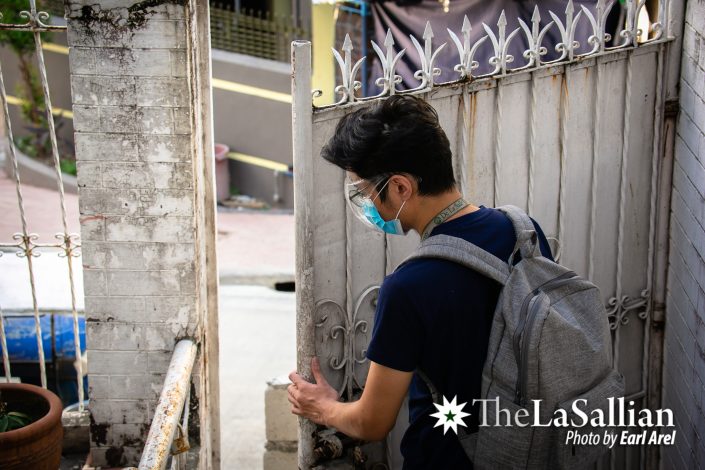The University administration, in partnership with the University Student Government (USG), held Student Development Goals: F2F is Real last Friday, April 1, to discuss current plans and guidelines for face-to-face classes. A panel discussion and an open forum also commenced, shedding light on different perspectives concerned with the implementation of plans to return to in-person learning.

An adaptive roadmap
USG President Giorgina Escoto emphasized that the gradual reopening of the campus was made possible due to the large number of students who have been fully vaccinated and have received their booster shots. Additionally, students under the College of Science (COS) will be the first to participate in HyFlex classes. Once the first run of HyFlex classes that are set on the 10th week of the term are done, follow-up surveys will be released to determine areas of improvement in implementation and further proposals for in-person classes.
“If we don’t use data, if we don’t use surveys, baka mapahamak lang mga estudyante natin,” Science College Government President Jed Lurzano expressed.
(…students might get harmed.)
Data derived from these surveys are important as it allows the University to adjust the roadmap for campus reopening depending on the opinions of the student body, faculty, and personnel. While the Inter-Agency Task Force (IATF) protocol allows 100-percent capacity in Manila schools, College of Liberal Arts (CLA) Associate Dean Dr. Ron Resurreccion stressed that the capacity is only an option that allows the University to be flexible.
“We need to be empirical about this…Every now and then, mayroon tayong surveys na sinasagutan to guide us [in] our decisions,” Ressureccion said.
(Every now and then, we administer surveys…)
Meanwhile, Association of Faculty and Educators of DLSU, Inc. (AFED) President Dr. Benito Teehankee mentioned that the Commission of Higher Education (CHED) gave the University a window to design a roadmap with the Lasallian community and stressed that the community can no longer be defensive toward the virus.
“What CHED is giving us is an opportunity to carve out our own roadmap…based on our core values as Lasallians,” Teehankee explained.
Reality of in-person learning
With COVID-19 protocols easing, University Provost Dr. Robert Roleda expressed optimism on the possibility of conducting limited in-person laboratory classes during the 10th week of the current term. HyFlex classes would also be introduced during the current term on a voluntary basis based on agreements made by professors and their students.
Although there are only five HyFlex classrooms on the Manila campus and one on the Laguna campus—which can only accommodate 14 students—Roleda assured students that no one will be left behind as they can still attend HyFlex classes online, whether synchronously or asynchronously. Roleda also mentioned the possibility of gradually increasing the number of people allowed to enter the campus.
Meanwhile, the University is set to offer three modalities of learning during the upcoming Summer Term: Hybrid, pure online, and pure face-to-face. The Summer Term would also serve as the pilot trimester for Term 1 to allow the University to adjust its guidelines based on the observations made during the Summer Term.
Also, some campus facilities, such as the library and discussion rooms, are now accessible to students and faculty after complying with the requirements issued by CHED. Other campus facilities will also be opened gradually once necessary renovations are done.
Concerns, future plans
The excitement of reopening the University was also accompanied by uncertainties. Mendez-Nuñez Mayor Fredderick Vida expressed his concerns about student safety, citing the possibility of students being exposed to another infected student or household member.
Roleda assured that there are current measures in place, such as isolation facilities scattered around the University and contact tracing.
“We still follow the health protocol [that was] designed by DOH and IATF from the very beginning,” Roleda affirmed.
Additionally, Roleda shared future plans to improve University facilities that cater to student learning with the Hybrid learning implementation in mind. Several lecture classrooms are now intended to be converted as laboratory classrooms to cater to the influx of COS students, and more space is expected after rebuilding St. Mutien Marie Hall. Roleda expressed that these changes are not only limited to COS but extend to other colleges, citing possible construction of computer laboratories, black box studios, and physical education facilities in the future.
“We are doing our best to be able to have them ready [in] 12 to 18 months’ time,” Roleda added.
